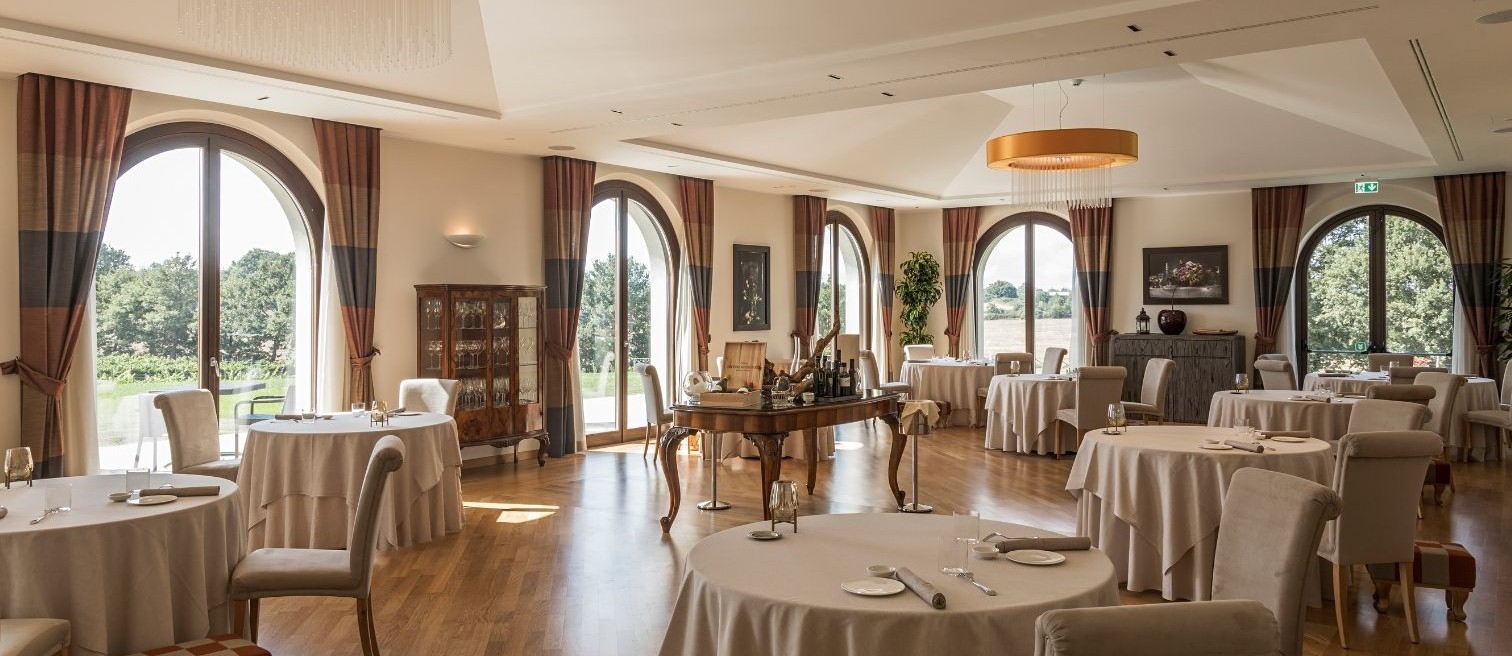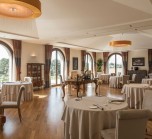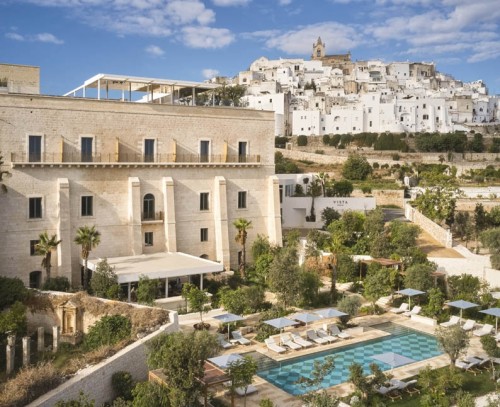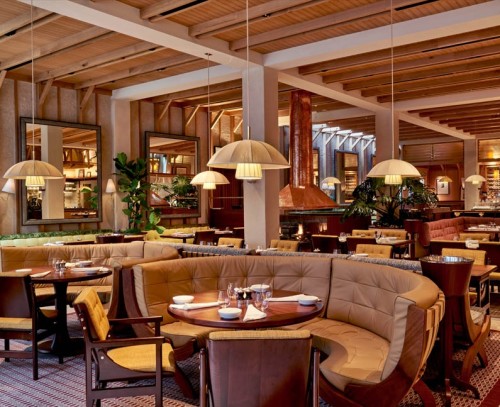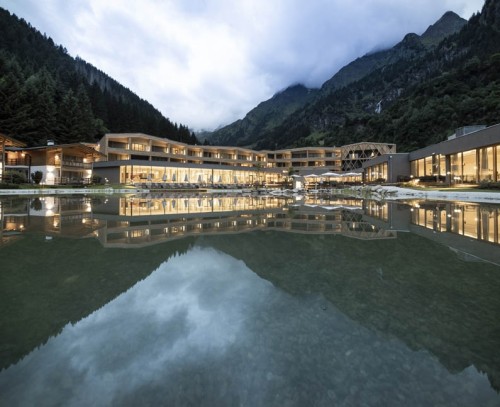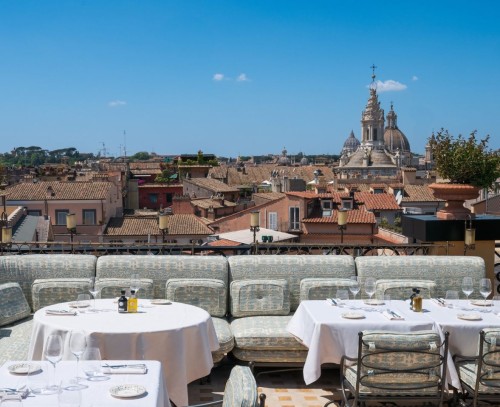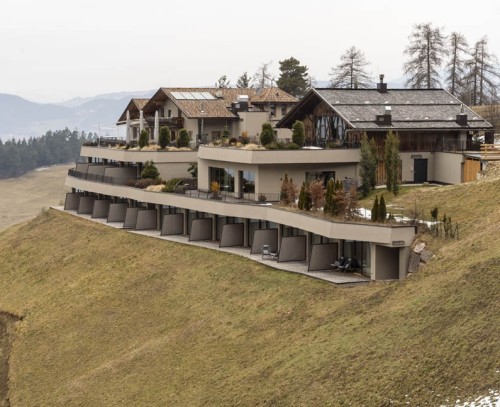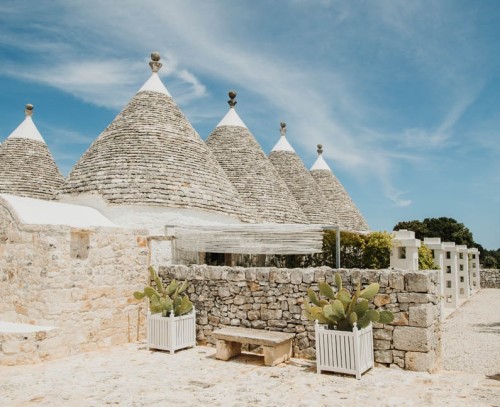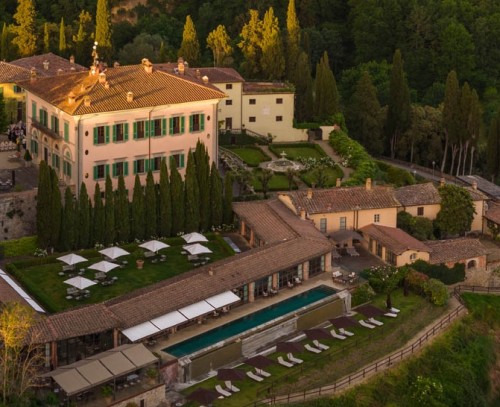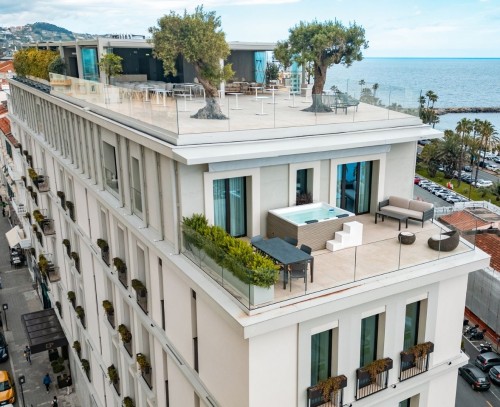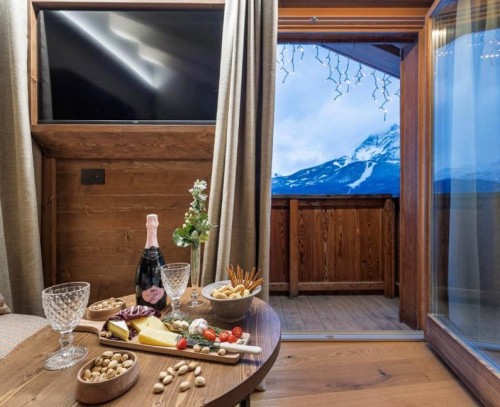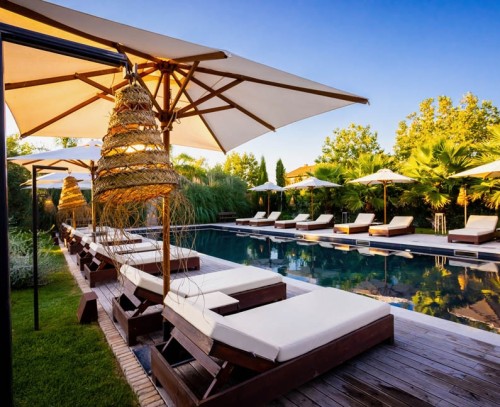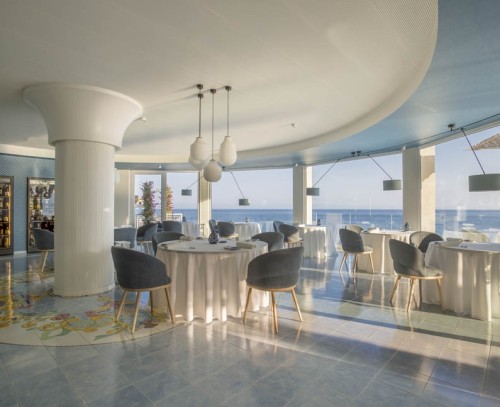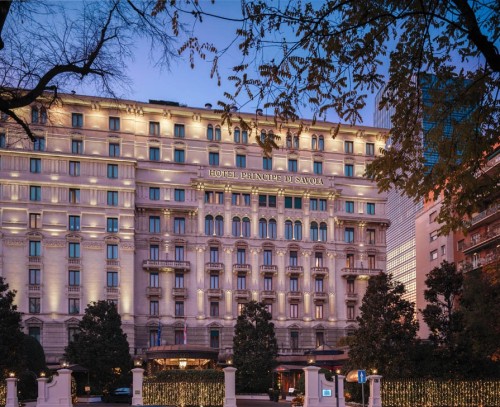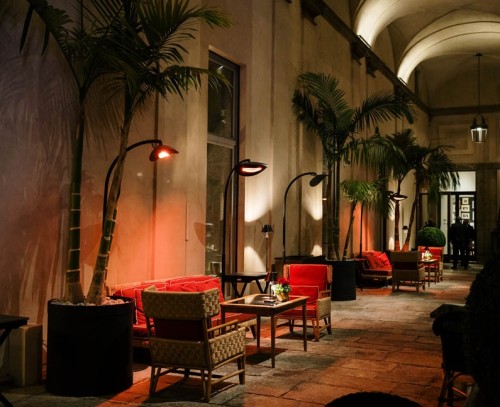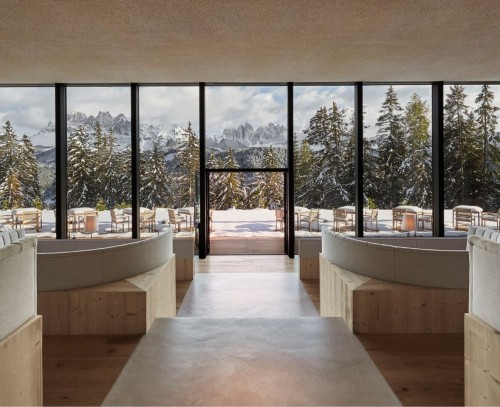A place that becomes a haven, detached from the hectic pace and urban chaos, yet closely connected to the outside world: Borgo La Chiaracia is the unexpected resort in Umbria, Lazio, and Tuscany.
The story
"Initially, we didn't plan to build a luxury resort; we were just looking for a place to relax and escape the city's hectic pace until we arrived here and fell in love with this land—it was love at first sight," says Anna Ramazzotti, the owner of the property along with Eugenio Vinciguerra, her partner in a company specializing in virtual communication, automation software, and home automation. A magical place in the heart of ancient Etruria, between Umbria, Lazio, and Tuscany, precisely in Castel San Giorgio, not far from Orvieto and Lake Bolsena, situated on volcanic soil rich in energy, surviving through eras and generations, spanning 14 hectares, with 3.5 dedicated to the village and the rest to the farm.
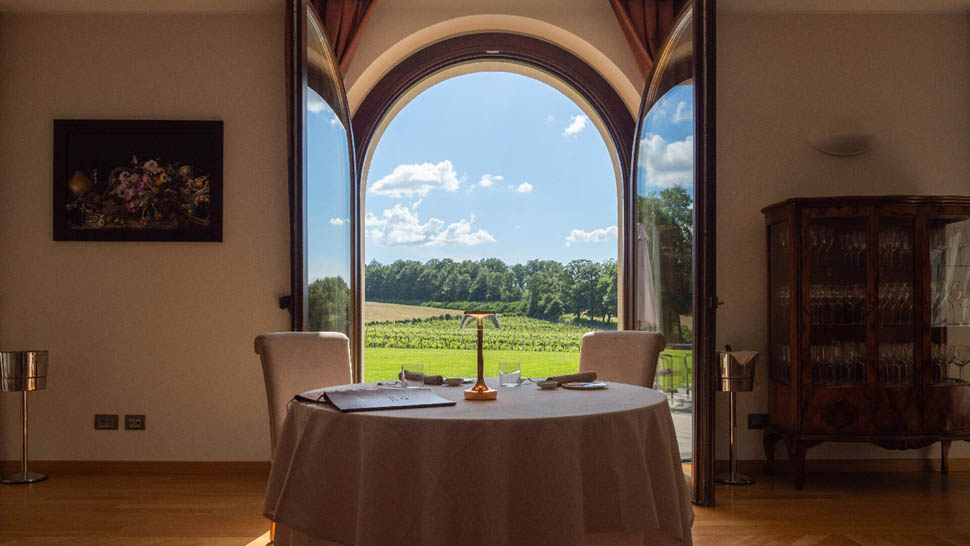
"We acquired the property in 2005, and for the first 5 years, we focused solely on the agricultural business. Then we decided to build the resort, but it wasn't easy," continues Ramazzotti. During the brigandage period, these places were occupied by brigands, and to get rid of them, it was decided to set everything on fire. "It was a significant challenge because there was nothing that could be preserved or recovered. We had to rebuild everything from scratch, with the additional burden of respecting the landscape constraint imposed on this area. The idea was to create a place that harmonizes with the surroundings, where the guest could experience the same emotion we felt the first time." Borgo La Chiaracia opened in 2018, and the name comes from the ancient cherry tree still present on the estate (in Umbrian dialect, chiaracia means cherry). It has 26 rooms, including 3 suites: "We could have created many more rooms, but we preferred to leave the intimate and reflective nature of these places unchanged, which we respect a lot," emphasizes Ramazzotti.
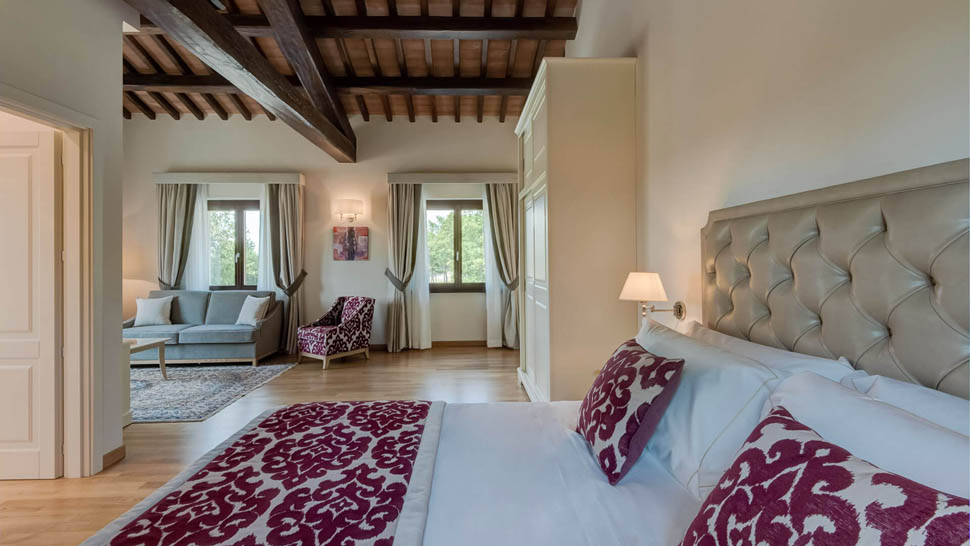
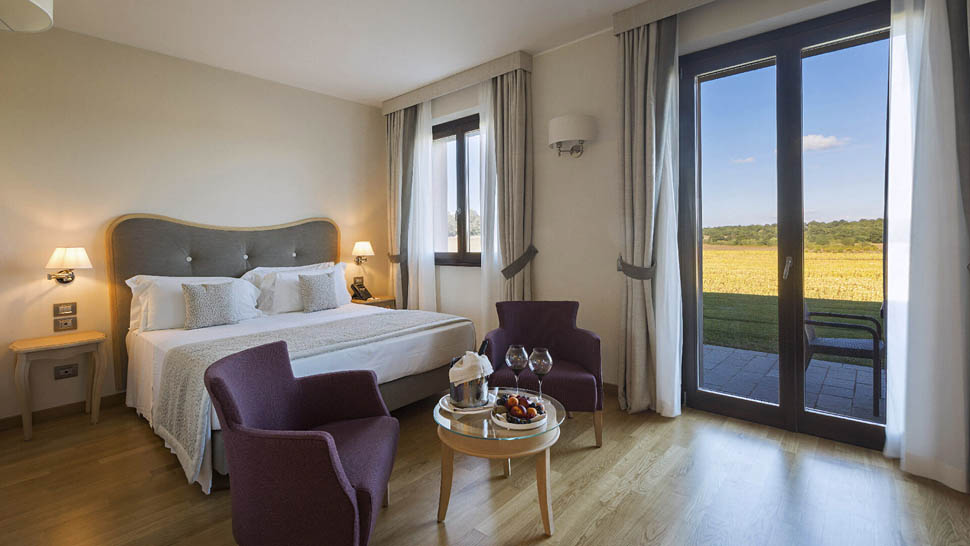
A place that becomes a haven, detached from the hectic pace and urban chaos, yet closely connected to the outside world, thanks to a fiber optic system covering the entire establishment, telephone networks enhanced with high-speed Wi-Fi, meeting rooms integrated with hi-tech systems, and intelligent cameras. A sophisticated hospitality project that promotes energy savings through complete home automation, the use of state-of-the-art thermal solar panels, and innovative and eco-friendly materials, constituting an example of technological innovation in service to both individuals and the environment. Furthermore, the architectural solutions implemented include three distinct farmhouses built following the natural flow of the land, connected by a heated tunnel that allows easy movement from one's room to the pool, restaurant, or garage, which is also equipped with charging stations for electric cars or bikes, all without ever having to go outdoors.
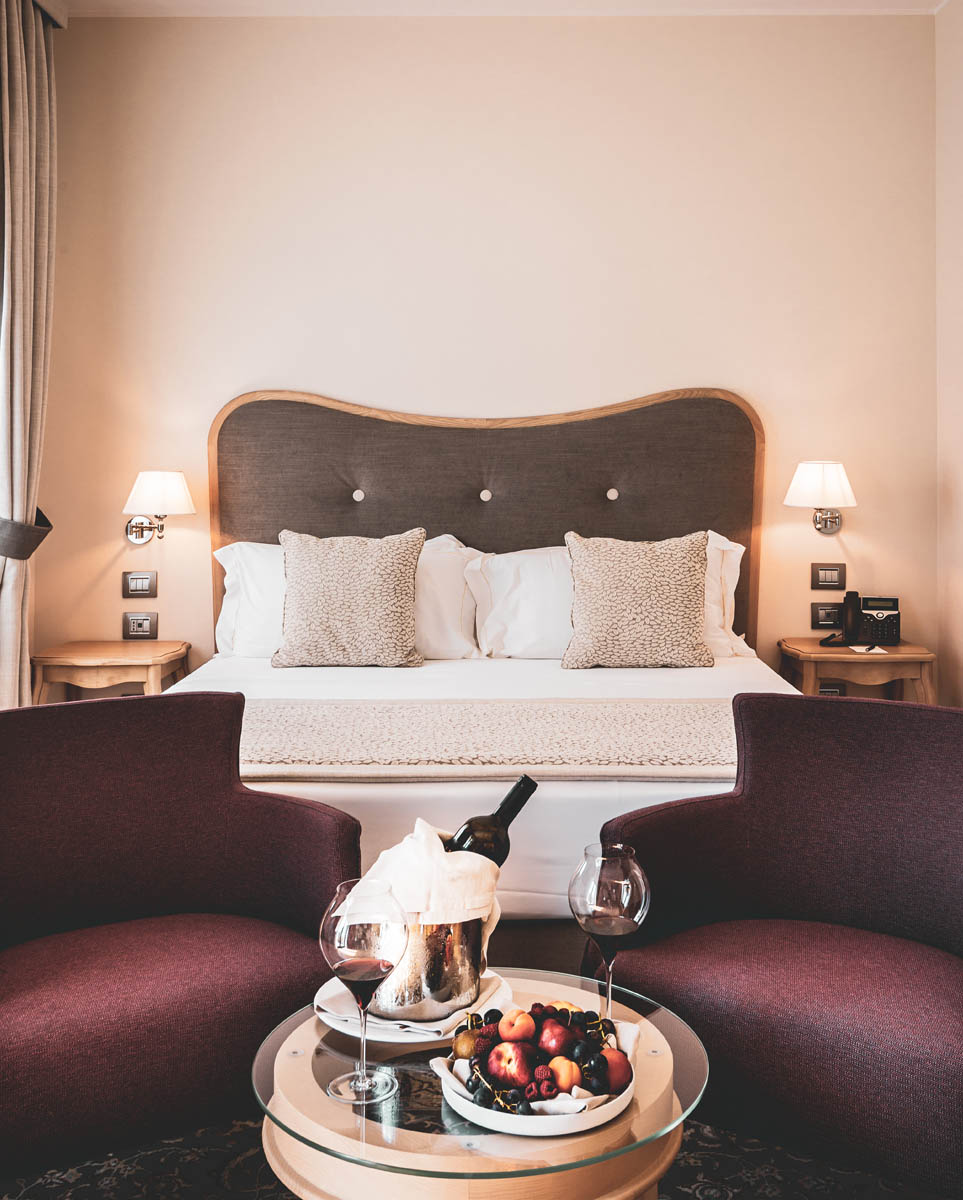
Thanks to all these measures, just one year after its opening in 2019, the village won the international Le Fonti Award in the "Innovation and Communication/Smart Hotel" category. However, the project was not only to create the first Italian smart hotel but also a comprehensive pleasure destination that could combine technological advancement, respect for the land, the enhancement of local food and wine excellence, and the well-being of body and mind, aiming to offer the best in each of these aspects. Examples include the gym, equipped with state-of-the-art machinery, and the futuristic Livinna Spa, a wellness temple with a panoramic pool, Turkish bath, heated Finnish sauna at 90 degrees, and saline sauna at 40 degrees, where a team of professionals can tailor massages or treatments to individual needs. "The presence and accessibility of the Spa are one of the first things guests ask for and the first activity they engage in when they arrive; in such a context, it becomes indispensable," says Anna Ramazzotti.
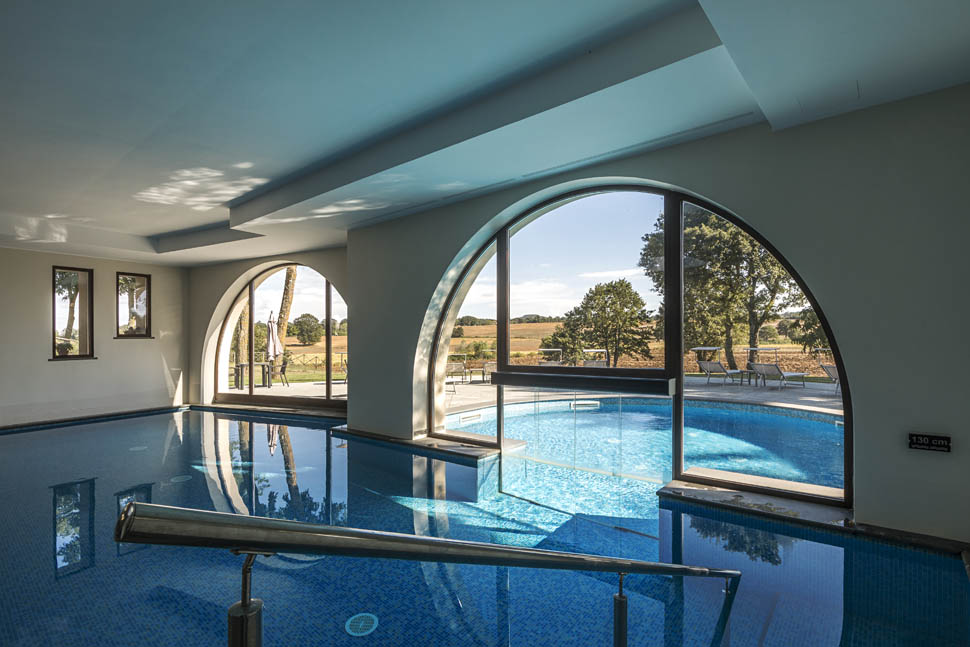
Technological contributions play a fundamental role here as well, with unique innovative machines in Italy, such as Physia, which uses low-frequency and low-intensity electrical impulses to regenerate cells, restoring beauty and luminosity to the skin. Another example is the Zerobody Starpool bed, positioned on 400 liters of warm water, with a special patented membrane that prevents direct contact, reproducing the absence of gravity and promoting complete muscle relaxation, aided by special headphones that reproduce functional sounds.
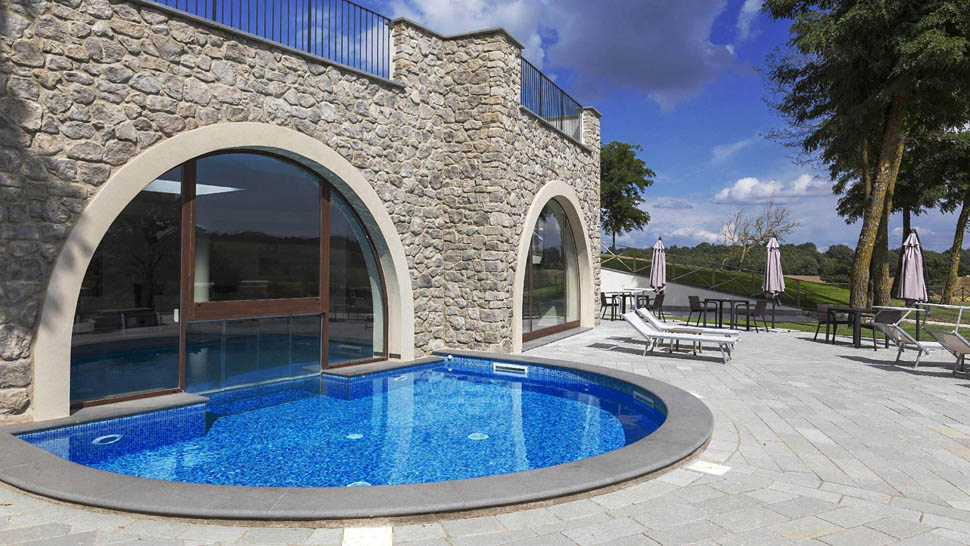
In this context, every detail is aimed at pampering and indulging both the body and the spirit, complemented by a unique territory with volcanic soil and a cool, ventilated climate that positively impacts the estate's vineyard, planted 15 years ago with Chardonnay and Pinot Noir, processed separately to produce identity wines. "We have five harvests behind us now, and the production ranges between 3000 and 5000 bottles, depending on the vintage. Most are used for internal consumption, while for the remaining part, we rely on some local distributors. This year, we also plan to produce a sparkling wine" proudly states Matteo Calcabrini, the General Manager of the property. In addition to wine, the farm produces red fruits, hazelnuts, chestnuts, spelt, aromatic herbs, and wild herbs, which become protagonists on the table thanks to the creativity of executive chef Daniele Auricchio, who oversees the offerings of both restaurants on the property: Pagoda, a modern bistro for resort clients, featuring a menu more focused on traditional Italian flavors and familiar comforts, such as tomato soup or wild boar ravioli with red wine reduction, and the gastronomic restaurant Radici, open to the public and dedicated to fine dining, with a more inspired, refined, and complex cuisine, earning it appreciation and mentions in major gastronomic guides.
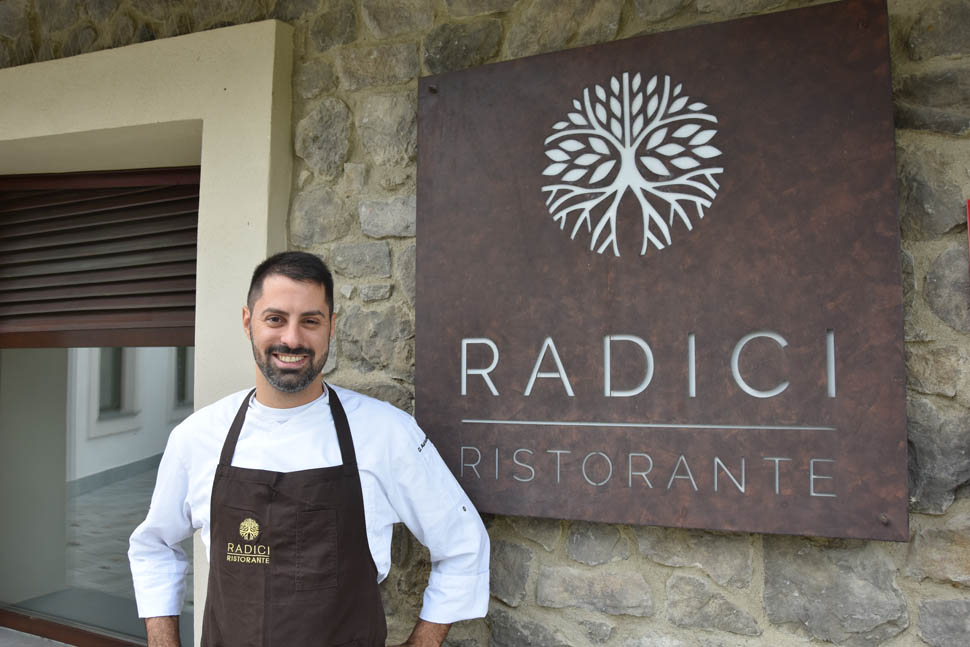
In the summer, the offerings expand, as Pagoda closes for lunch, and there is a simpler offering to enjoy by the pool or wherever the customer desires. Finally, at any time of the day, Etrusco Bar is operational, the realm of bar manager Alessio Ciucci, who offers, in addition to a surprising selection of gins, classic or signature drinks, more creative and sophisticated, constantly evolving, accompanied by a fast and lean offering, always focused on the quality of raw materials.
The restaurant
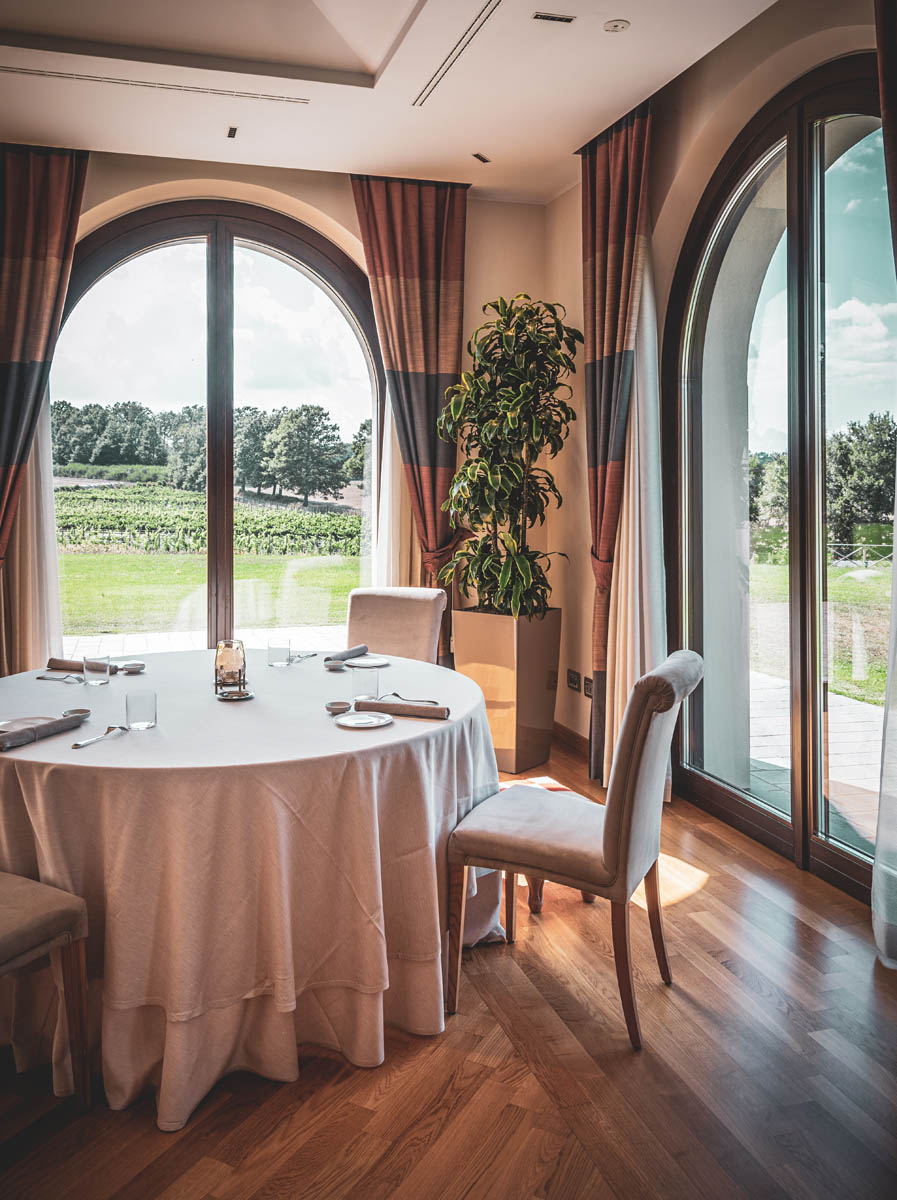
"We wanted to create a place that synthesizes the various needs of the tourist, focused on bien vivre, which cannot do without good food and drink," explains Anna Ramazzotti. Thus, the two restaurants are two sides of the same coin, structurally different in their offerings but complementary in presenting the best of local productions: "We want to be ambassadors of this wonderful territory, bringing together all its excellences, even with dinners organized specifically to allow each artisan to tell their own story, creating a virtuous system that allows the growth of the entire sector, starting from the awareness that none of them could do what they do in a different context," continues the owner. And the name Radici exemplifies this idea precisely, aiming to give voice to all those small artisans and producers who would struggle to stand out individually but can do so collectively thanks to a structure of international caliber that acts as a binder and promoter, and a chef like Daniele Auricchio who perfectly interprets this philosophy.
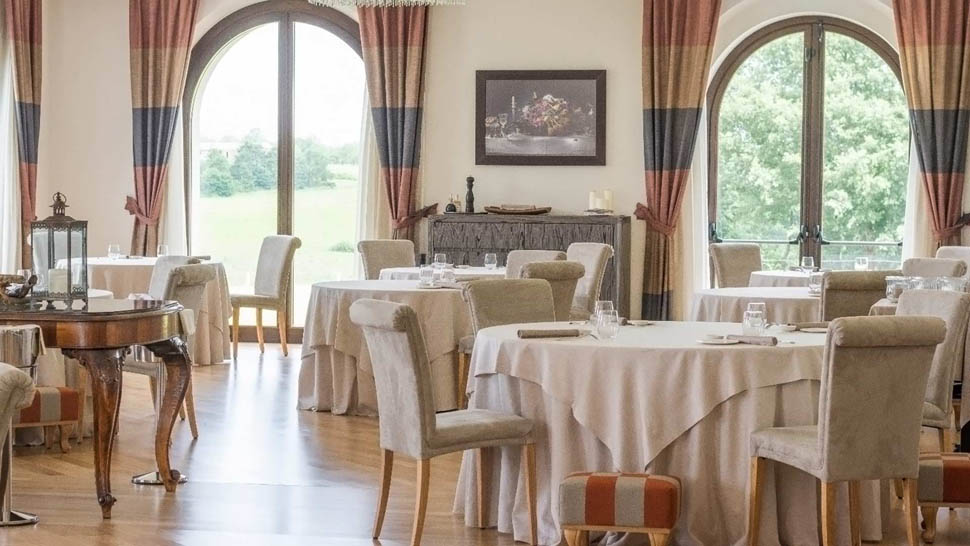
Born in Naples in 1990, he has significant experiences in Italy and abroad, such as with Sergio Mei at the Four Seasons in Milan and Raffaele Lenzi at the Il Sereno restaurant on Lake Como (a Michelin-starred restaurant), up to the most prestigious one with master Martín Berasategui at the three Michelin-starred Spanish restaurant Lasarte. His vision is broad, well-structured, and very practical, translating into a cuisine naturally dedicated to the territory but not devoid of its southern origins; instead, it enriches them and gives them a new look, linking them to the context and embracing the idea of circular cuisine theorized by Igles Corelli, aimed at using the ingredient in its entirety to avoid waste. In this sense, the two restaurants become functional: the same starting point, the same brigade, and the same raw materials, but different and dynamic variations that allow for more versatility and easier waste reduction. "The two paths are deeply intertwined; both stem from daily interaction with a close-knit brigade that I like to involve in every step. The goal of minimizing waste is not just an ethical matter but also my way of achieving the maximum gustatory expression from each ingredient," explains Daniele Auricchio.
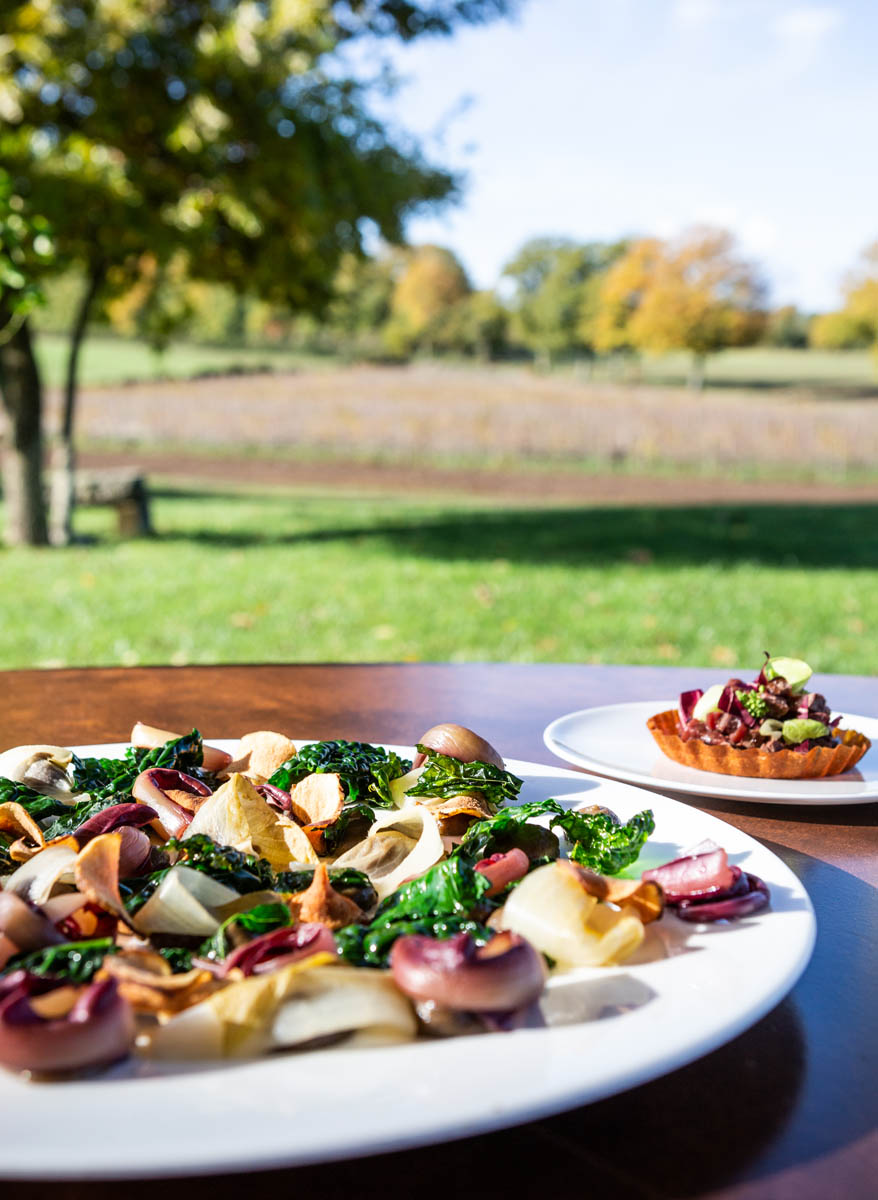
However, in the Radici restaurant, this aspect emerges more prominently, giving life to dishes that unleash the chef's imagination and creativity, a synthesis of his private and professional experiences, where there is room for experimentation and the search for surprising flavors, mostly inclined towards pronounced acidity, without ever losing sight of minimalism and aesthetic care, a legacy of his artistic studies. A materialistic cuisine, therefore, made of few but functional ingredients, clearly expressed in a menu consisting of four starters and the same number of first courses, second courses, and desserts, where the dishes do not have a name but are identified by the raw materials that compose them. Two tasting menus are also available: "Origini 20," consisting of 4 courses at 75 euros, focused only on locally sourced raw materials within a 20 km radius, and "A mano libera," a 6-course journey at 105 euros dictated by the chef's inspiration and the season, also transmitted through off-menu dishes, which can be paired with 3 glasses of wine for 35 euros or 4 glasses for 50. The dining room is spacious, bright, elegant, and meticulously detailed, enhanced by wooden flooring, large windows overlooking the estate framed by high-quality curtains, refined furnishings, and many references to nature in colors and photographic reproductions. It accommodates an average of 30 covers, in addition to those available in the splendid outdoor veranda. The tables are set in a classic manner and are well-distanced from each other to ensure a high-profile gastronomic experience.
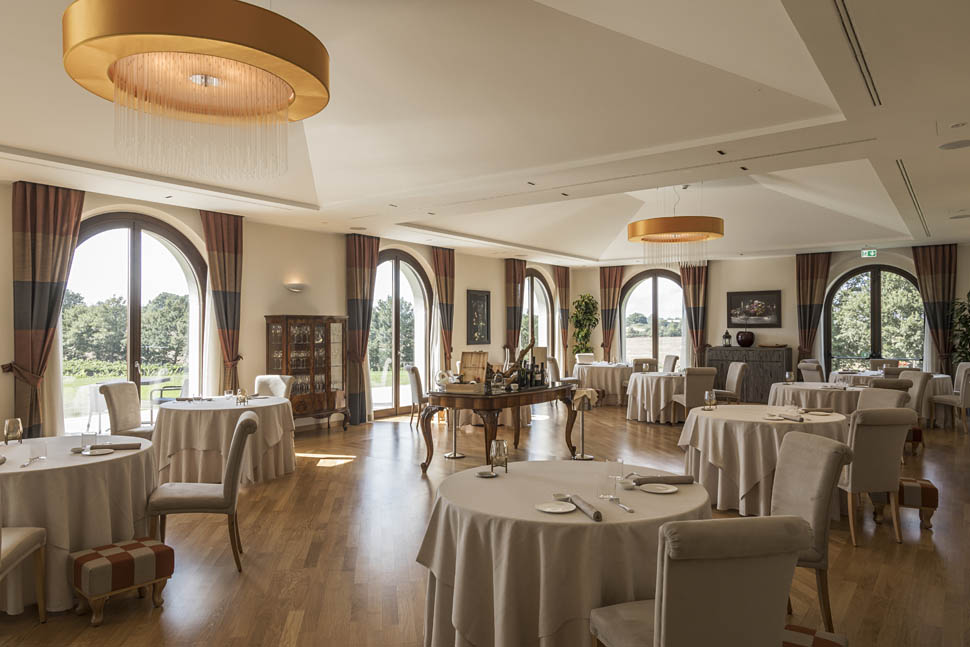
The dishes
The amuse-bouche immediately reveals the chef's stylistic signature, capturing the essence of the territory, aesthetic taste, and flavor. Among these, the veil of Pecorino Romano and local honey on which the restaurant's logo is reproduced, and the puffed bread filled with typical chicken livers but enhanced with raspberry powder, stand out. The yeast-based offerings are also of excellent craftsmanship, ranging from chickpea flour crackers with sesame and fennel seeds to grissini made with polenta flour, up to the bread roll with pecorino and chicory, inspired by Terni's cheese pizza. The first course, "Scampo e agnello" (Langoustine and lamb), shows the Campanian origins of Chef Auricchio, who serves a fresh and meaty raw crustacean breaded with powder obtained from its shells, adapting it to the Umbrian context. The lamb bottom, grilled to perfection, adds unexpected depth and gustatory richness.

"Erbe Amare, topinambur e capriolo" (Herbs Bitter, Jerusalem Artichoke, and Roe Deer) showcases a profound sensitivity toward the vegetable world: "I have no preferences between proteins and vegetables," confesses the chef. "I like to cook them in the same way, give them equal dignity, and extract the maximum flavor." Thus, kale, Belgian endive, radicchio, and turnip tops are lightly marinated and served with chips and roasted Jerusalem artichoke cream under ash. They are accompanied by a tartlet made solely from Jerusalem artichoke paste, its cream, the same vegetables in their raw form, and a tender roe deer tartare, lightly seared.
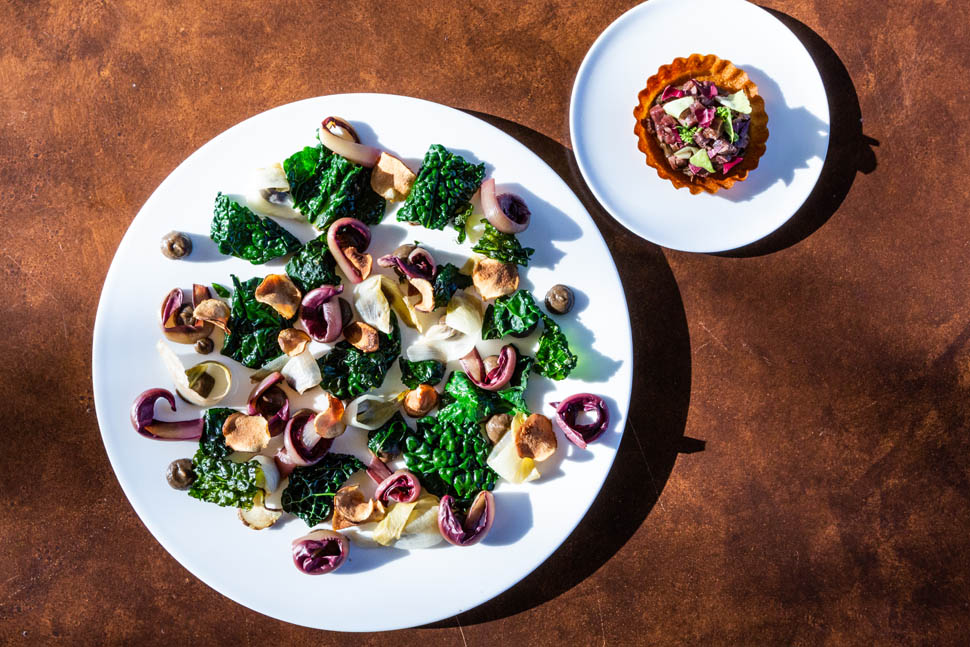
"Pane, zucca e formaggio" (Bread, Pumpkin, and Cheese) clarifies the zero-waste philosophy mentioned earlier: a herb brioche base with pumpkin cream, fermented pumpkin on top, marinated in a vinegar, salt, and sugar solution and cooked in oil. Its toasted seeds and the oil obtained from the peels and seeds dress it all up. As a side dish, a cheese obtained from the peels infused with milk contributes its savoriness to balance an excellent dish, both in terms of palate and conceptually. Following is "Piccione, papaccelle, ostrica e finocchietto" (Pigeon, Sweet Peppers, Oyster, and Fennel), unusually served as an appetizer, warm and scalloped, with oyster mayonnaise, sweet pepper cream, and fennel to accompany each bite. Completing the dish is a tartlet with cooked sweet pepper cream and a pigeon leg treated as if it were cooked ham, breaded with fennel. In this course, too, the importance for the chef of breaking down the dish into multiple stages is evident: "I do it to investigate and enhance the individual nuances of each ingredient, each of which is functional to achieving the overall expression," explains the Neapolitan chef.
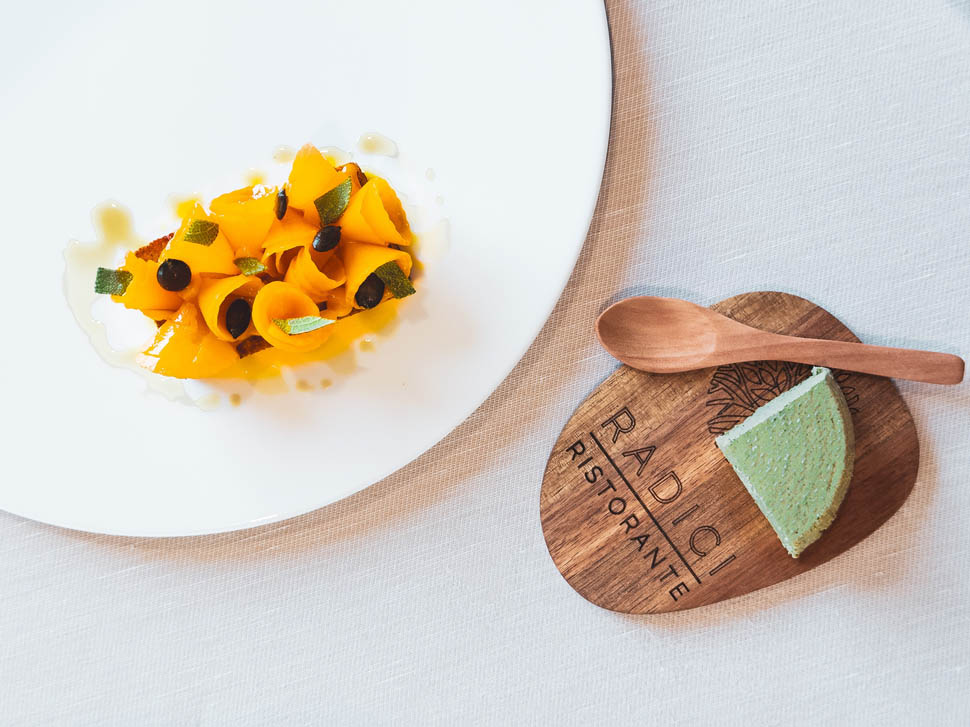
On the pasta front, "Riso, cavolo e cavoli" (Rice, Cabbage, and Cabbages) sacrifices something in terms of aesthetics but has surprisingly deep flavors, thanks to the blending with cauliflower cream that enhances the vegetable's taste. On top is a cauliflower foam matured in a solution of herbs, vinegar, salt, and sugar, while at the base is fermented red cabbage juice. "Seppia, arancia e tamarindo" (Cuttlefish, Orange, and Tamarind) reaffirms and exaggerates the circular cooking concept already clearly expressed by pumpkin: the cuttlefish is served in the form of buttons filled with pâté obtained from its fifth quarter and an intense, very good broth made from the mollusk's scraps, with orange and tamarind providing a marked acidity that does not clash in a context of bold flavors. In "Spaghetto, brodo di lago, cedro e alloro" (Spaghetti, Lake Broth, Cedrus, and Bay Leaf), however, the acidity of the cedrus does not find the necessary balance and ends up overpowering both the lake broth and the bay leaf. The second courses are excellent.

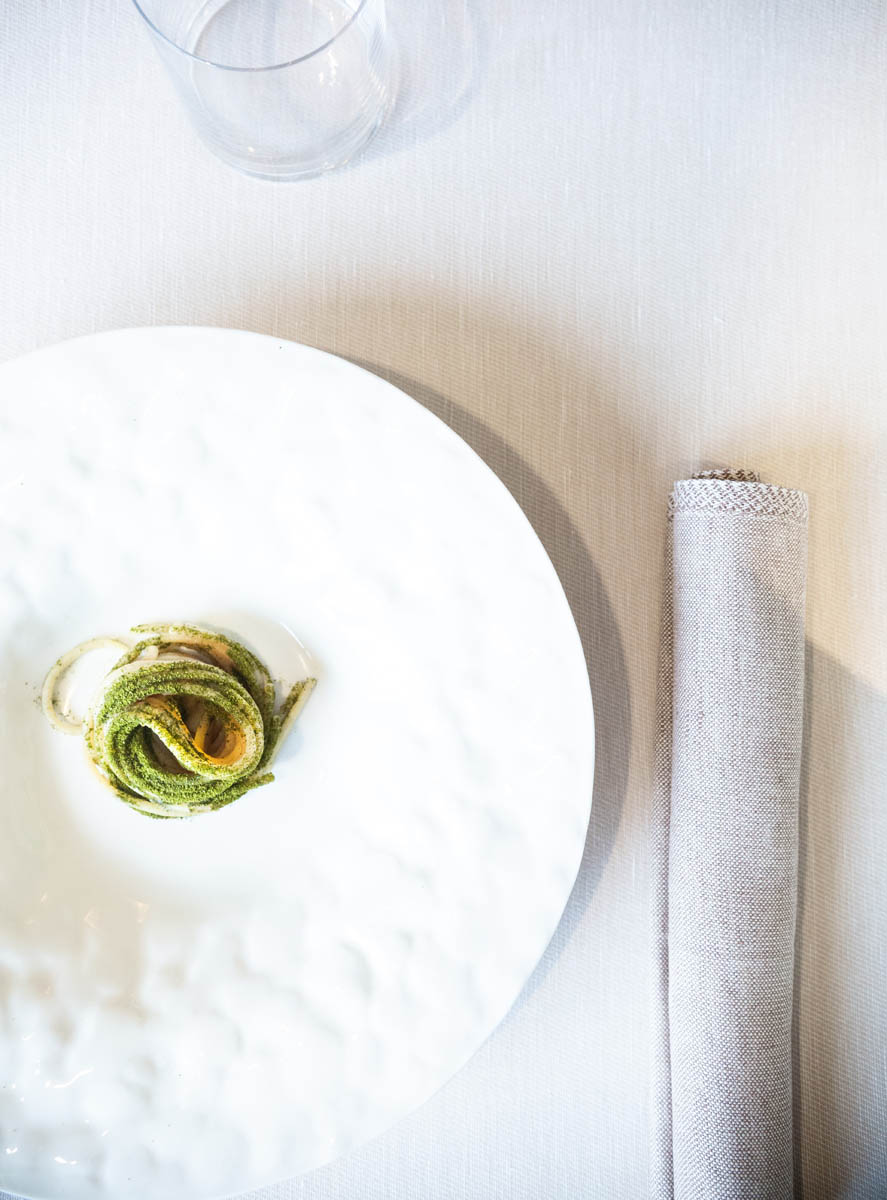
"Animella, biete, alghe" (Sweetbreads, Swiss Chard, Seaweed) features perfectly grilled veal sweetbreads, glazed with a seaweed and chard stock and covered with Codium algae powder. On the side, a salad of seaweed and chard marinated in various consistencies, dressed with a sweetbread and toasted sesame mayonnaise. "Maialino, mirtilli e scarole" (Suckling Pig, Blueberries, and Escarole) also involves two versions: in the first, escarole marinated and dressed with a grilled suckling pig extract, fresh blueberries, and blueberry powder; the second, the same vegetable is blanched in a garlic broth and used to conceal vacuum-cooked local wild suckling pig belly, glazed with a fermented blueberry and paprika barbecue sauce. The desserts are also well-executed, with "Castagna, mandarino, cacao" (Chestnut, Mandarin, Cocoa) standing out. It features a soft cocoa base with candied orange and mandarin, topped with mandarin cream and puff pastry, cocoa meringue, and chestnut mousse.
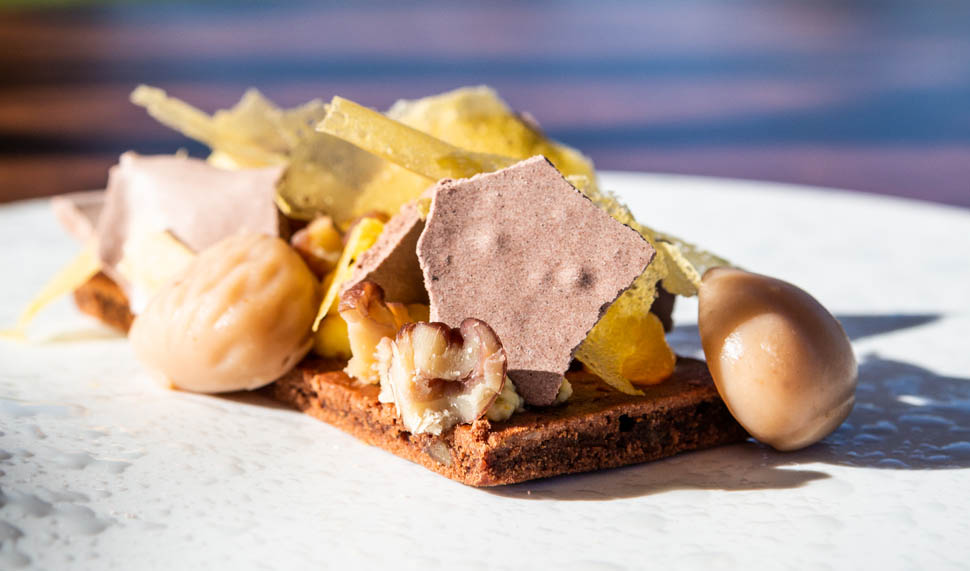
Leading a polite and competent service from the first day, both at Radici and La Pagoda, starting with breakfast, is the maître sommelier Mauro Clementi. An experienced hospitality expert, Clementi is adept at making guests feel comfortable and pampered from the beginning to the end of their stay. "We must offer a tailor-made experience for various needs, impeccable service based on elegant but discreet formality, and a professional and punctual approach that conveys warmth," he explains. He is also responsible for a dynamic and up-to-date wine list, featuring well-known champagne houses and great Italian sparkling wines. There is also a section dedicated to less complex sparkling wines, such as bottle-refermented ones.
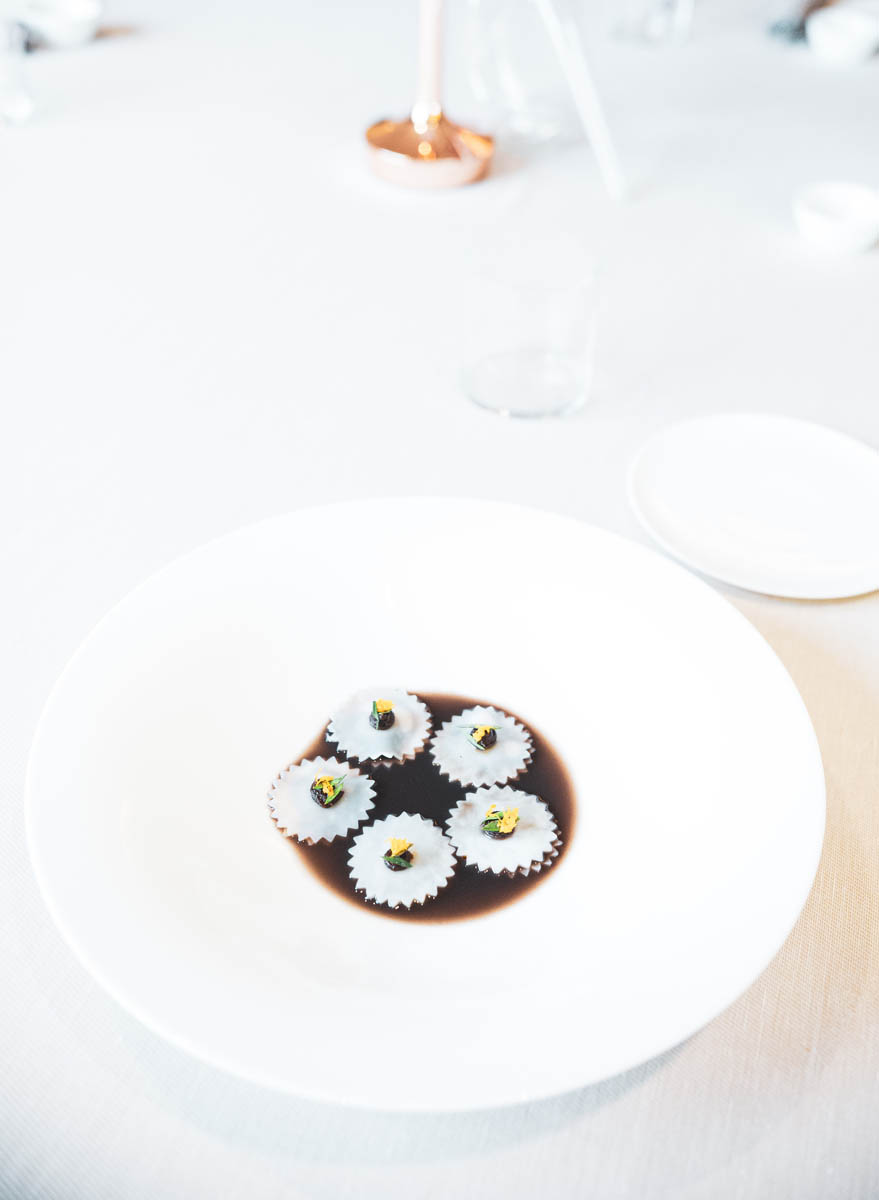
Umbria is well represented, divided between Orvieto and its surroundings and the rest of the region, featuring the most representative wineries and a good depth of vintages, alongside emerging and already established small producers. The rest of Italy is adequately represented, both by conventional wineries and those small producers who lean towards natural and significant macerations, in line with the idea of offering identity wines that enhance indigenous grape varieties and can tell the characteristics of the land they come from. "So that they can adapt perfectly to the dishes, seem tailor-made, but above all, be consistent with the philosophy we want to convey," explains Clementi. Finally, France is also well represented in all its best-known production areas, along with an interesting, unusual, and in-depth selection of sweet wines, primarily Umbrian but coming from all over Italy.
Località Borgo la Chiaracia snc, 05013 Castel Giorgio (TR)
Telefono: +39 0763 627123
